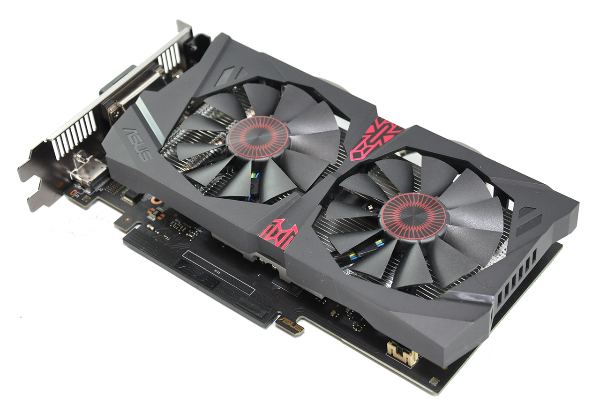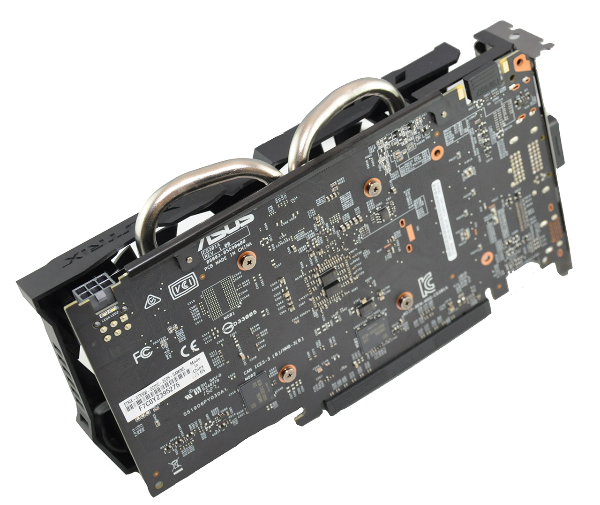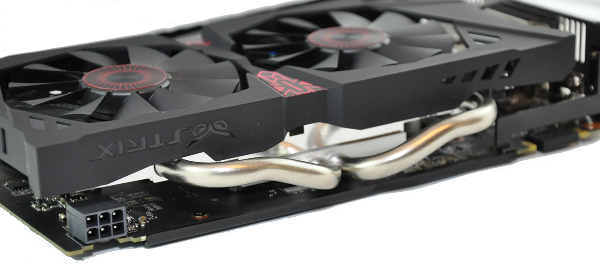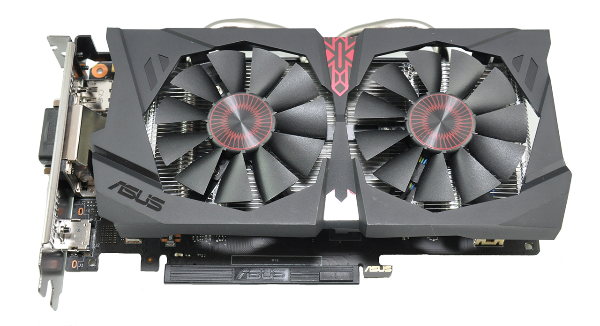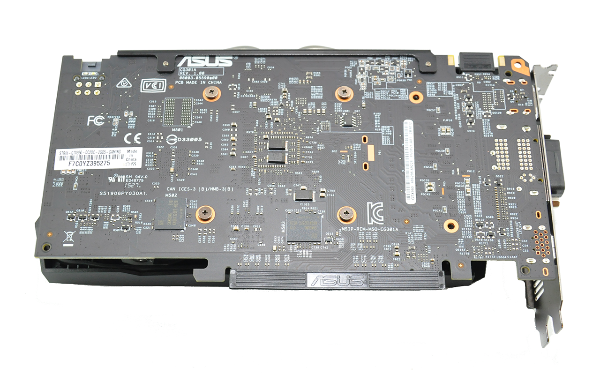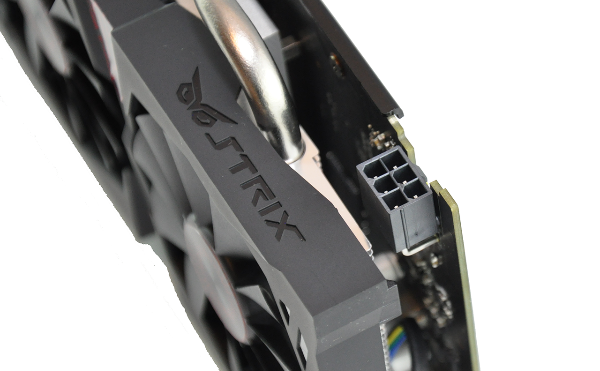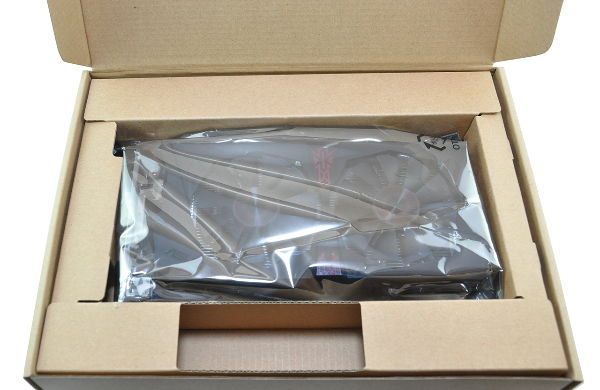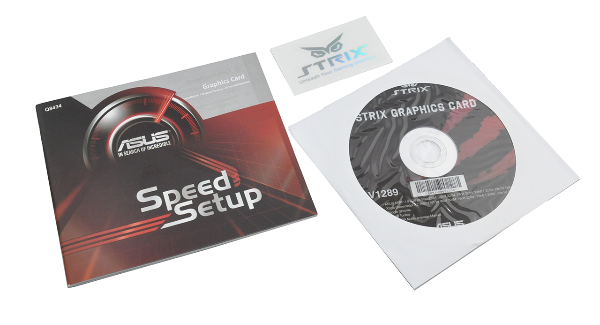Asus GeForce GTX 950 Strix Review
Today we get our first look at Nvidia's latest GPU in Asus' GeForce GTX 950 Strix.
Why you can trust Tom's Hardware
Product 360
Asus' Strix-series cards are instantly recognizable by their familiar shroud design, styled in such a way to make them resemble the face of an owl. The company sticks with that aesthetic for the GeForce GTX 950 Strix. In fact, its shroud design appears to be nearly identical to that of the GTX 960 Strix we reviewed earlier this year.
The GTX 950 Strix's PCB is actually a fair bit larger than its more powerful counterpart. This card measures 218mm long and is 100mm tall, though the heat pipes extend out the top by an additional 10mm. Being on the budget end of its line-up, Asus doesn't include a backplate. As a result, the card is 39mm wide, which is 2mm narrower than the 960 Strix we looked at previously. Despite those sizable dimensions, the Strix only weighs 482g.
Asus arms its take on the GTX 950 with a DirectCU II cooler. But unlike many of the similarly-equipped boards of the past, the company only uses two heat pipes this time around. At least they're both beefy 8mm plated copper pipes, which pass through an array of horizontal aluminum fins. There's no ignoring the 950's pedigree though; the heat sink is noticeably smaller than what you'd find on more expensive graphics cards.
The DirectCU II thermal solution only comes in contact with the GPU. The VRMs and memory modules are cooled by air passing over them. There is plenty of open space around the components, so provided your case has good ventilation, you shouldn't have an issue. Air gets sucked in over the heat sink and blown back into the case by this design.
Asus uses two 80mm fans to cool the GTX 950 Strix. They're designed to remain stationary until the GPU reaches 60 degrees C, after which they start ramping up slowly to remain as quiet as possible.
The GTX 950 Strix is built using Asus’ Auto-Extreme technology. Though it's not the first card produced this way, Asus remains the only manufacturer using a fully automated assembly process. Asus claims that automation allows the company to eliminate gloves from the assembly line, which further limits dust exposure.
These cards also feature Super Alloy Power II components, which are built with a special alloy that has magnetic- and heat-resistant properties, as well as corrosion resistance.
Get Tom's Hardware's best news and in-depth reviews, straight to your inbox.
Power delivery is handled by a single six-pin PCIe connector facing upwards. The plug is oriented so that the clip faces out, making it easier to remove the power cable when needed.
Along the top edge of the card, near its I/O bracket, you’ll find a single SLI interface. The GTX 950 is capable of two-card SLI, which is something we haven't seen from this GPU class before. In the past, SLI support was reserved for higher-end cards.
Asus chose a unique layout for its video outputs. Stacked in the center (rather than the bottom) of the bracket, you’ll find two DVI connectors. One of them is DVI-D; the other is a DVI-I. Flanking either side of the DVD-I connector is one DisplayPort output and one HDMI port.
You won’t find a lot of extras inside the box, but Asus does a nice job on the packaging. Too often, the entry-level products arrive in a foam reinforced bag and a basic carton. Asus instead went with a box that offers plenty of impact resistance in case it is dropped or bumped during shipping.
Inside you’ll find the card, an instruction manual and a driver disc. The optical media includes GPU Tweak II for overclocking and XSplit Gamecaster to record and share game play. Asus does not include a DVI-to-VGA adapter, which may be a problem for owners of older monitors.
Kevin Carbotte is a contributing writer for Tom's Hardware who primarily covers VR and AR hardware. He has been writing for us for more than four years.
-
g-unit1111 So how does this compare in price to the GTX 960? If it's lower by about $20 - $30 I would think this card would be selling like hot cakes.Reply -
Math Geek very interesting looking card. nvidia has been doing a lot of this lately offering almost the same performance for less money than a pretty new card. it indeed looks like an awesome budget card well above the 750ti and almost as good as the 960 for a lot less.Reply
will be very interested in the other versions of this that show up. nvidia trumps amd yet again. *sigh* when will the carnage end?? please amd do something to stay relevant!!! -
Math Geek ReplySo how does this compare in price to the GTX 960? If it's lower by about $20 - $30 I would think this card would be selling like hot cakes.
article says about $160 so more like $40 less than the amp edition they compared it to. however, with prices at $175 or so on the low end it is closer to an average of $20 or so price drop. which is why he states the 960 should lose the recommendation to this card since it is almost the same performance for a less. if your goal is 1080p at decent frames according to this review there is little reason to spend the extra money on the 960 over the 950. if course this is only price speculation. once they are out, the price will drop more than likely making this even more of a good deal. -
InvalidError This might be the final nail in most of AMD's rebadged products coffins. If my HD5770 decided to die on me in the near future, I would seriously consider the GTX950.Reply -
Math Geek on the high end amd still looks ok with the new stuff but the mid to low end they are clearly not taking the nod at any price point. next gpu chart will probably be all nvidia until the very end when it might dual suggest the 390 with the 970........ maybe......Reply -
Onus I noticed some inconsistencies in the charts; sometimes the GTX750Ti is there, sometimes it isn't. To me, this is the card the GTX950 replaces, although I am disappointed it needs a 6-pin power connector.Reply
The card does look like a winner though, and reinforces a lesson I've ignored to the detriment of my wallet more than once; for a single monitor, $150-$175 is all that needs to be spent on a graphics card in order to get good settings for games.
I have to agree with the sentiment that AMD better get its tail in gear if they want to remain relevant.
-
kcarbotte ReplyI noticed some inconsistencies in the charts; sometimes the GTX750Ti is there, sometimes it isn't. To me, this is the card the GTX950 replaces, although I am disappointed it needs a 6-pin power connector.
The card does look like a winner though, and reinforces a lesson I've ignored to the detriment of my wallet more than once; for a single monitor, $150-$175 is all that needs to be spent on a graphics card in order to get good settings for games.
I have to agree with the sentiment that AMD better get its tail in gear if they want to remain relevant.
I went through the charts. Looks like the only one missing 750ti is Metro at 1080p. I've requested the image be amended. FYI: min 30, avg 39.625, max 54 on the 750ti.
Nvidia has moved the 750ti to the lower price point, but keeping it on the market.
The 950 isn't being positioned by Nvidia as an upgrade from the 750ti, as the performance isn't a big enough jump for most consumers to make the change.
It is however a notable improvement in performance over a 750ti. -
kcarbotte ReplySo how does this compare in price to the GTX 960? If it's lower by about $20 - $30 I would think this card would be selling like hot cakes.
article says about $160 so more like $40 less than the amp edition they compared it to. however, with prices at $175 or so on the low end it is closer to an average of $20 or so price drop. which is why he states the 960 should lose the recommendation to this card since it is almost the same performance for a less. if your goal is 1080p at decent frames according to this review there is little reason to spend the extra money on the 960 over the 950. if course this is only price speculation. once they are out, the price will drop more than likely making this even more of a good deal.
Bingo.
There's very little reason to get a GTX 960 over a 950 at this point in my view. The extra money, albeit only $40 or so, would be better served in a different component, or on a game.
-
logainofhades Reply16493184 said:I noticed some inconsistencies in the charts; sometimes the GTX750Ti is there, sometimes it isn't. To me, this is the card the GTX950 replaces, although I am disappointed it needs a 6-pin power connector.
The card does look like a winner though, and reinforces a lesson I've ignored to the detriment of my wallet more than once; for a single monitor, $150-$175 is all that needs to be spent on a graphics card in order to get good settings for games.
I have to agree with the sentiment that AMD better get its tail in gear if they want to remain relevant.
Maybe that card will be a 940?
